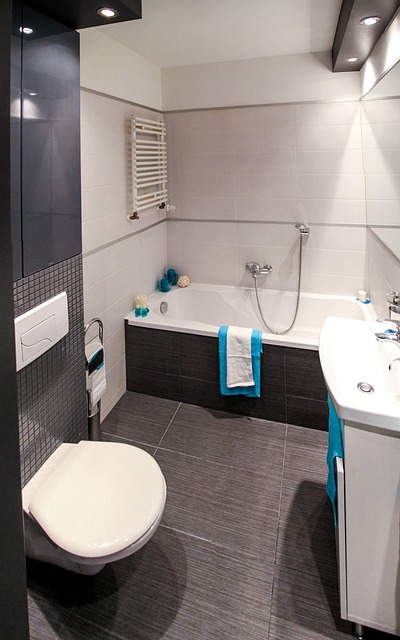Integrating easy-to-use home security systems into senior safety protocols is vital for minimizing risks during emergencies. These systems, designed with seniors' needs in mind, enhance well-being by providing quick access to support and enabling remote monitoring. By detecting falls or unusual activities and automatically notifying emergency contacts, they foster independence and reduce response times, ultimately saving lives. Care homes can leverage smart sensors and automated alert systems for holistic monitoring, ensuring swift staff response and psychological well-being among residents. Centralized command centers equipped with advanced technology for real-time monitoring and communication further streamline responses, while regular drills prepare all stakeholders for effective crisis management.
Emergency response integration is crucial for ensuring senior safety in their homes. As our population ages, understanding their unique needs and integrating them with modern technology becomes essential. This article delves into critical aspects of senior safety systems, focusing on the role of easy-to-use home security solutions. We explore how these systems can be seamlessly integrated into senior living environments, along with best practices for effective emergency communication and coordination. By implementing these strategies, we aim to enhance safety and peace of mind for seniors and their families.
- Understanding Senior Safety and Emergency Response Needs
- The Role of Easy-to-Use Home Security Systems
- Integrating Emergency Response Protocols with Senior Living Environments
- Best Practices for Effective Emergency Communication and Coordination
Understanding Senior Safety and Emergency Response Needs

Understanding senior safety lies in recognizing their unique needs and challenges, especially in the context of emergency responses. Seniors often require specific assistance during crises due to age-related physical limitations or health conditions. For example, an easy-to-use home security system can significantly enhance their safety by providing quick access to support during an emergency, such as a fall or medical incident. These systems must be designed with simplicity and accessibility in mind, ensuring seniors can easily activate alerts without added stress or confusion.
Emergency response integration is key to addressing these needs. By seamlessly integrating senior-friendly security measures into existing emergency protocols, we can create a more effective safety net. This includes utilizing technology that allows for remote monitoring and rapid dispatch of aid, catering specifically to the requirements of older adults who may live alone. Effective integration ensures that help arrives promptly, minimizing potential risks and providing peace of mind for both seniors and their loved ones.
The Role of Easy-to-Use Home Security Systems

In today’s digital era, integrating emergency response systems with senior safety is paramount to ensure a swift and effective reaction in case of emergencies. An essential component of this integration is the implementation of easy-to-use home security systems tailored for seniors. These systems are designed to empower individuals with autonomy while providing peace of mind for caregivers. User-friendly interfaces, simple setup processes, and clear audio or visual alerts make them accessible to even those with limited technical proficiency.
Easy-to-use home security systems offer a range of features that can detect unusual activities, like unauthorized entry or falls, and automatically notify emergency contacts. This proactive approach enhances senior independence while ensuring timely intervention when needed. By streamlining the process of requesting assistance, these systems can significantly improve response times, potentially saving lives and mitigating risks associated with delayed aid.
Integrating Emergency Response Protocols with Senior Living Environments

Integrating Emergency Response Protocols with senior living environments is a vital step in enhancing the safety and well-being of elderly residents. As our population ages, it’s essential to ensure that these spaces are equipped with robust emergency response systems tailored to their unique needs. This involves seamlessly integrating easy-to-use home security measures, such as smart sensors and automated alert systems, into the fabric of senior living facilities.
By combining advanced technology with comprehensive emergency protocols, care homes can create a safer environment. For instance, simple yet effective tools like fall detection wearables or smart monitoring devices can promptly notify staff or loved ones in case of an emergency, ensuring swift response times. This integration should consider not just physical safety but also psychological well-being, fostering an atmosphere where residents feel secure and empowered.
Best Practices for Effective Emergency Communication and Coordination

Effective emergency communication and coordination are paramount in senior safety systems, ensuring swift and efficient responses to potential hazards. A key best practice is implementing centralized command centers equipped with advanced technology for real-time monitoring and alert dissemination. These hubs should integrate various sensors and devices from easy-to-use home security systems, allowing for holistic awareness of residents’ well-being.
Regular drills and simulated scenarios further enhance coordination. Regularly practicing evacuation routes, assembling points, and emergency contact protocols prepares all stakeholders—from caregiving staff to seniors themselves—for seamless, effective responses during actual crises. Moreover, utilizing user-friendly communication tools that cater to different cognitive abilities ensures everyone can convey and receive critical information promptly.
Emergency response integration for senior safety systems is a multifaceted approach that combines advanced, yet easy-to-use home security technologies with comprehensive emergency response protocols. By seamlessly integrating these elements into senior living environments, we can create safer, more coordinated responses during emergencies, ensuring prompt and effective care for our aging population. Adopting best practices in communication and coordination further fortifies this system, ultimately enhancing the overall quality of life and security for seniors.
